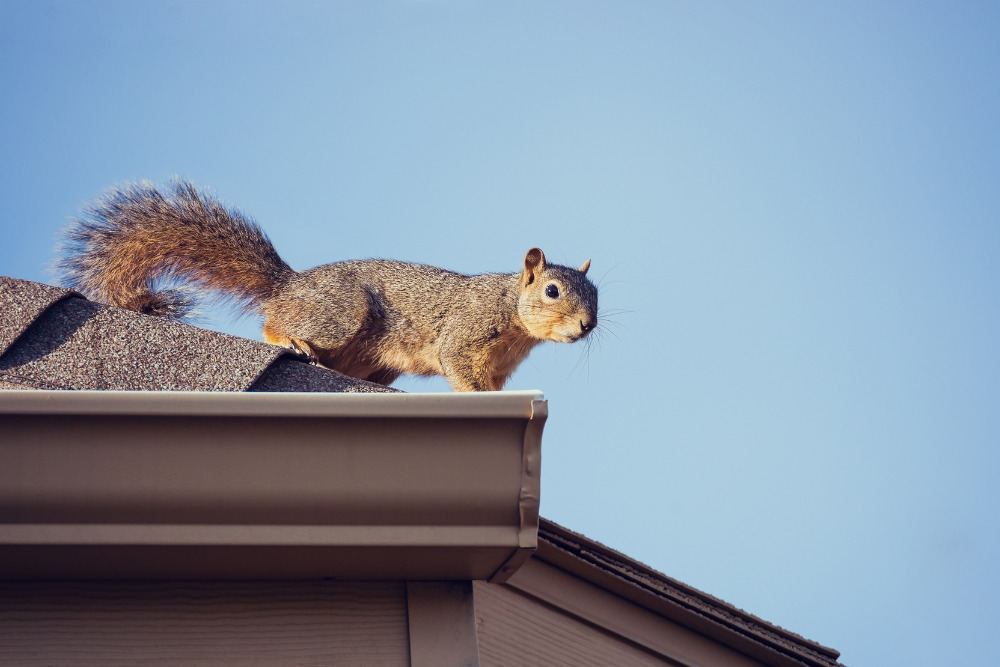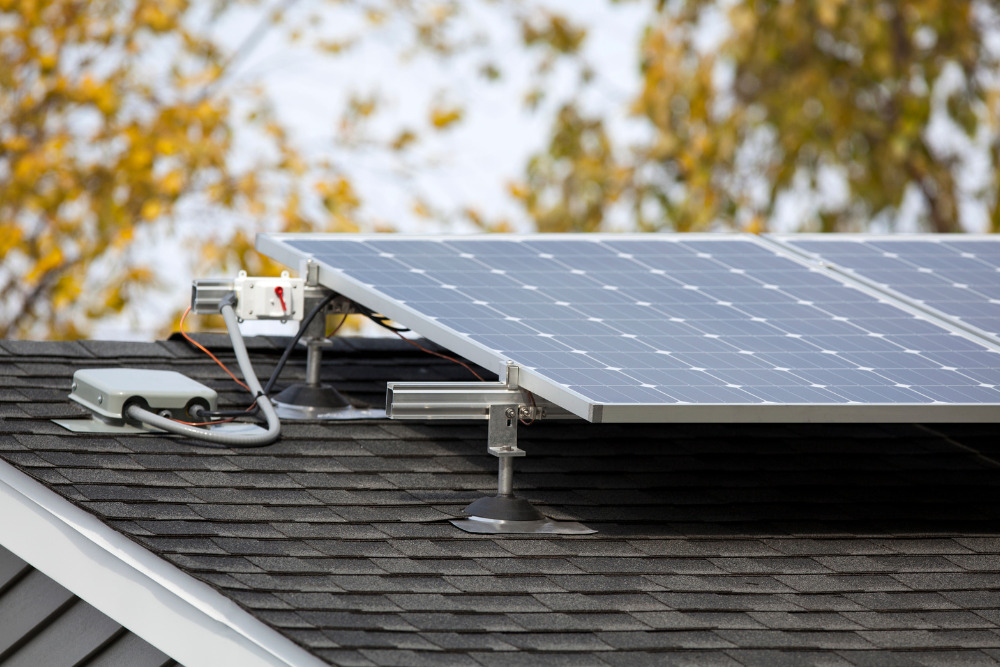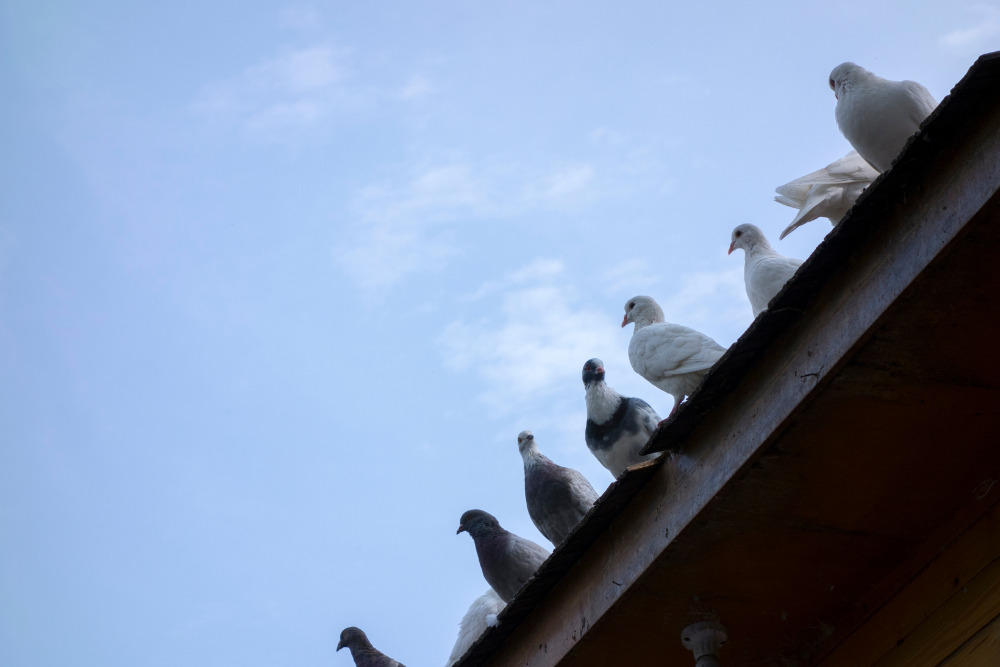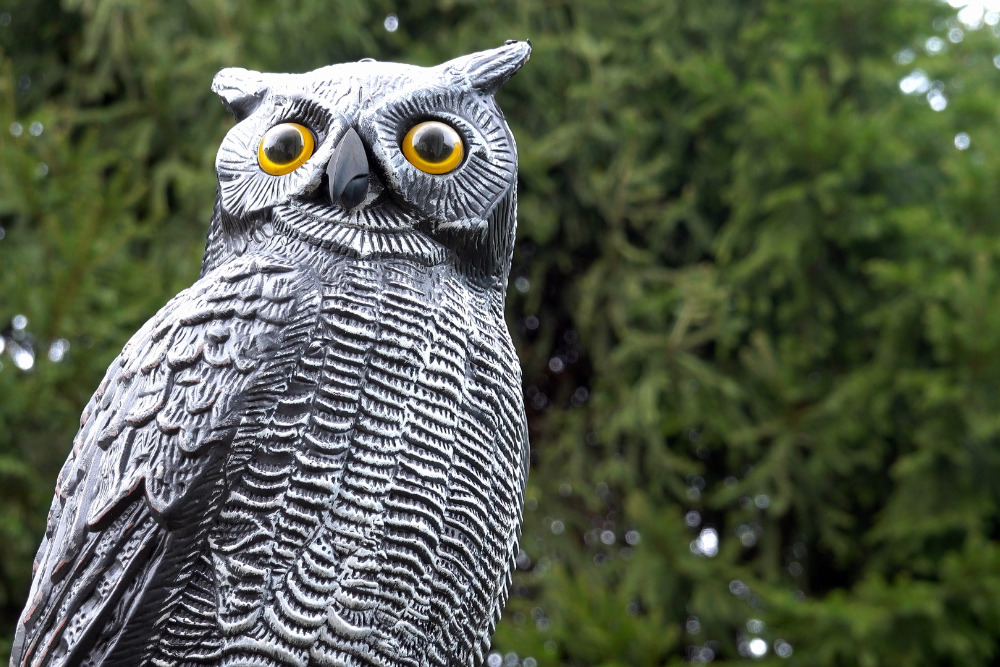
Solar panel pests like birds and rodents destroy your panels by chewing on the wires, nesting under the panels, and leaving their droppings. An integrated pest management system, which includes installing critter guards, can protect your solar investment.
Solar panels are becoming more commonplace on homes and businesses interested in generating their own source of renewable energy. While solar panels are built to last 25-30 years, they are not immune to the destructive nature of pests. Birds, rodents, and other creatures can damage solar panel systems, leading to reduced efficiency, electrical failures, and costly repairs. Learn how pests can harm your solar panels and what pest control measures you can take to protect your investment.
How Pests Damage Your Solar Panel System
Pests destroy your solar panels in several ways, including:
- Nesting: Solar panels make excellent roosts for birds, especially pigeons. The space between the roof and the panels shield the birds from direct heat from the sun and strong winds and make a safe nesting spot. Birds may perch directly onto the panels causing scratches that reduce the panel's efficiency. They can also entangle the wires causing electrical problems.
- Chewing on wires: Squirrels and rodents are known for chewing solar panel wires. You may experience frequent electrical failures resulting in high repair and maintenance costs. Worse still, frayed, exposed wiring is a fire hazard.
- Droppings: Bird droppings may seem harmless but can wreak havoc on your solar panels. The build-up attracts other pests, such as rodents that munch on the droppings and can chew on wires. Bird droppings also contribute to the overall cleanliness of the panels; dirty panels absorb less sunlight than clean ones.

Solar Panel Pest Control Methods
Solar panel pest control is the only permanent solution to prevent damages and associated costs. The methods vary depending on the pest and your preference.
Conventional methods
These are quick but ineffective solar pest control solutions. This is because they're not long-term, and some include inhumane treatment of pests. They include:
- Traps: You can set traps for squirrels, rodents, and birds. However, this may not work long term since traps will only scare the pests for a short while and will not catch all of them in a single instance. Additionally, most traps involve killing and injuring animals, which is inhumane. Depending on the type of animal, you may be liable if it’s a protected species (i.e. bats).
- Poison: Some people poison rodents and squirrels as a quick eradication method. Killing is not only highly unethical but also a waste of money and time since it doesn't work for long. You may scare them away for a few months, but they'll keep returning. In addition, poisons are an environmental hazard and can lead to contamination in other parts of the house.
- Nets: Nets are a great way to keep off pests from your solar panels. You can combine them with bird spikes for effective bird control. However, they don't last long and will need frequent replacements and maintenance (consider all the leaves and twigs that will get caught in nets). Also, some pests, such as rodents, can chew through the nets and render them ineffective.

New innovations
These are the most convenient solar panel pest control solutions. They'll save you time and money by guaranteeing effective protection for your solar panels. They include:
- Mesh: Solar mesh, all called critter guard or bird barrier, is a wire mesh and one of the most effective pest control methods. It creates a long-lasting physical barrier preventing the pests from accessing the underside of your panels. You’ll get it in many forms depending on the manufacturer, but its durability is the same.
- Ultrasonic devices: Ultrasonic devices are repellers and work by producing high-frequency sounds for both rodent and pigeon control. Some devices have an LED light and sound to scare the pests, especially at night. You'll only need to install them near the solar panels, where they can easily detect and scare away pests.
- Visual deterrents: Visual deterrents are a great option for bird problems. The idea is to scare them away without harming them. Most solar panel bird deterrents include predator features, motion, and reflective light. Such optical scares create an illusion that the area isn’t safe, sending the birds away. For instance, you can use decoys such as red-tail hawks or coyotes. A holographic flash tape is also ideal due to its light, motion, and color. However, some deterrents may not work with larger birds, and it’s also important to consider the aesthetics and any HOA restrictions.
- Natural predators: Natural predators scare away pests and help control their population. An outdoor cat can help with rodents, but it may be more challenging to attract predators of birds to your home. Consider this strategy to be just one part of an integrated pest management solution.

Solar Panel Pest Control Cost
Solar panel pest control cost depends on the method you choose and the size of your solar system. While some are low-cost, others are quite an investment. Here's a breakdown of how much it may cost you, depending on the method you choose.
- Traps: Traps are cheap and don't require installation costs. For instance, you'll get a pack of 4 mouse traps for less than $5. However, the price varies depending on the manufacturer and may go up depending on the size of the solar system.
- Mesh: A quality solar mesh kit costs between $ 50 and $150 on Amazon. This price depends on the brand and components in the kit. Although it’s easy to install, you’ll need to include installation costs if you’re not an adept DIYer.
- Ultrasonic devices: These devices are budget-friendly since you can get one for less than $50. They’re easy to install so there’s little or no installation costs.
- Visual deterrents: A fake hawk is around $20 on Amazon, while a reflector is about $40. With a little creativity, you can also make a visual deterrent at home. However, you may need to combine it with other pest control methods.
Solar Panel Pest Control Maintenance
Many solar panel manufacturers provide a 25-year warranty against defects; however, the panel warranties may be voided due to improper maintenance or neglect. Check your warranty, as damage due to pests is probably not covered.
Follow these tips for peace of mind and to protect your solar energy investment:
- Regular inspections: Check your solar panels regularly for nesting birds and rodent infestation and get rid of them before they do major damage to the system.
- Solar panel cleaning and maintenance: Accumulated leaves and debris are more attractive to pests since they make suitable nesting materials. Also, cleaning makes it difficult for them to hide, and you can spot them as soon as they put up camp.
- Integrated pest management: Integrated pest management uses many strategies to prevent pests from invading your solar system. Consider a combination of natural predators, bird guards, and visual deterrents.
- Consult a professional: Once you install your panels, consult a rodent and bird control expert to help you design the best pest control strategy for the system.


